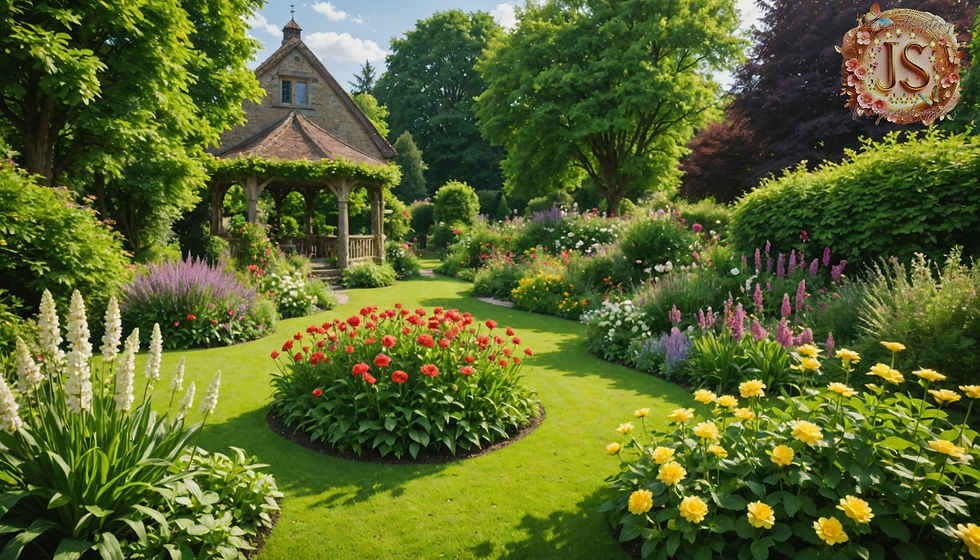How Flowers Get Pollinated - The Small Miracle That Gives Us Our Fruits - Find Out How?
- Salma H
- Jan 13
- 5 min read
Flowers are truly one of nature's impressive creations, showcasing both beauty and complexity. However, they are more than just pretty sights. They play a critical part in how plants reproduce and flourish, thanks to processes like pollination and fruit production. Let’s explore how flowers pollinate, how they turn into fruits, and why this cycle is crucial for our environment.
The Basics of Pollination
Pollination involves transferring pollen from a flower's male part (the anther) to its female part (the stigma). This step is key for fertilisation, resulting in the creation of seeds and, eventually, fruits. Various agents help with this process, such as wind, water, and especially animals. In fact, about 75% of the world's flowering plants rely on animal pollinators for reproduction, contributing significantly to global food supplies.
Pollinators are essential allies in this process. Many flowers have developed unique features to attract their specific pollinators. Bright colours, inviting scents, and sweet nectar entice creatures like bees and butterflies. This mutual relationship ensures plants can reproduce efficiently while pollinators receive nourishment, making it a win-win for both.
Types of Pollination
Pollination can be classified into two main categories: self-pollination and cross-pollination.
Self-Pollination
Self-pollination occurs when pollen from a flower fertilises its own stigma. Flowers with both male and female parts, like the common pea (Pisum sativum), often employ this method to reproduce independently. While self-pollination guarantees that plants can reproduce without partners, it limits genetic diversity. This lack of variation can weaken plants' ability to adapt to environmental changes, making populations more vulnerable.
Cross-Pollination
On the other hand, cross-pollination happens when pollen from one flower fertilises the stigma of another flower. This method enhances genetic diversity, allowing plants to adapt and thrive in changing environments. For example, fruit crops like apples (Malus domestica) benefit greatly from cross-pollination. They often need pollen from different apple varieties to set fruit properly. This diversity is crucial for healthy ecosystems and robust plant populations.

The Role of Pollinators
Pollinators, including bees, butterflies, birds, and even bats, are vital to the lifecycle of many flowering plants.
Bees - Nature’s Most Efficient Pollinators
Bees hold the title of the most effective pollinators, helping to produce about one-third of the food we eat. Their furry bodies pick up pollen as they visit flowers seeking nectar, ensuring effective pollen transportation critical for fruit production. For instance, a honeybee colony can pollinate up to 2 million flowers in a single day, showcasing their incredible efficiency.
Other Pollinators
While bees are the stars, other pollinators also play significant roles. For example, butterflies are attracted to brightly coloured blooms, while birds like hummingbirds prefer tubular flowers. Each of these pollinators has unique preferences that shape plant growth and diversity.
The Process of Fertilisation
After pollen reaches the stigma, a fascinating process begins. The pollen grain absorbs moisture and germinates, creating a pollen tube that penetrates the flower's ovary. Fertilisation happens inside the ovary when the pollen’s sperm joins with the ovule, launching the creation of seeds.
Following fertilisation, the ovary undergoes profound changes. The ovule transforms into seeds, while the ovary itself evolves into the fruit. This transformation is crucial, as fruits protect seeds and are instrumental in their dispersal.

The Formation of Fruits
Fruits have important roles in a plant’s lifecycle. They not only protect seeds but also help with seed dispersal.
Types of Fruits
Dry Fruits: These fruits have a hard exterior. They can be dehiscent (splitting open) or indehiscent (not splitting). Examples include acorns, peas, and poppy capsules.
Fleshy Fruits: These are juicy and appealing, enticing animals to eat them. Common examples include strawberries, tomatoes, and watermelons. The ingestion of these fruits by animals helps disperse their seeds.
These fruits contribute to the ecosystem by providing sustenance for various animals that assist with seed dispersal. When animals eat fruit, they may carry the seeds to new locations, fostering plant growth in different areas.
Seed Dispersal Mechanisms
Seed dispersal is vital for gene flow and establishing new plant populations. Different fruits have adapted unique ways to assist in this process.
Wind Dispersal
Some fruits, like those of dandelions, feature fluffy structures, allowing them to float on air currents and spread seeds over distances of several miles. This method enables plants to colonise new regions quickly.
Animal Dispersal
Fruits with fleshy, edible skins attract animals. Once consumed, the seeds may be excreted in different places, giving them a chance to grow into new plants. Many tropical fruits, including mangoes and bananas, rely on animals for this dispersal method.
Water Dispersal
Certain fruits can float, being carried by water across rivers or oceans. This adaptation allows plants to reach far-flung areas, such as remote islands.
Environmental Factors Influencing Pollination and Fruit Production
Multiple environmental factors have a significant impact on pollination and fruit production.
Climate
Variables such as temperature, humidity, and seasonal patterns directly influence the timing of flowering and the availability of pollinators. For instance, a rise of just 2-3 degrees Celsius can lead to earlier flowering times. This adjustment affects when plants bloom and can lead to decreased effectiveness in pollination.
Habitat Accessibility
The presence of suitable habitats for pollinators is crucial for their survival. Urban growth and habitat destruction have reduced pollinator populations, directly impacting plant reproduction. Studies show a 30% decline in pollinator populations across the globe due to habitat loss.
The Importance of Pollination and Fruit Production
The processes of pollination and fruit production are foundational to both ecosystems and human life.
Biodiversity
Pollination enhances plant species diversity, which is critical for ecosystem health and stability. Various plant species create habitats and food sources for countless animals, fostering balanced ecosystems.
Food Production
Many fruits and vegetables we consume rely on pollinators for their production. The economic impact of declining pollinator numbers is immense; experts estimate that pollinators contribute about $20 billion annually to U.S. crop production alone. Protecting these pollinators is essential for food security and agricultural sustainability.
Threats to Pollination
While vital, pollination faces numerous threats worldwide.
Pesticides
Pesticide use in farming poses a significant risk to pollinators. Chemicals targeting pests can inadvertently harm beneficial insects like bees. For instance, studies indicate that neonicotinoids, a common class of pesticides, can lead to a 50% reduction in honeybee colonies.
Habitat Loss
Urbanisation and agricultural expansion erase habitats necessary for pollinators. As natural spaces vanish, pollinator numbers dwindle, severely impacting their ability to contribute to plant reproduction.
Climate Change
Climate shifts disrupt flowering times and pollinator activity. These mismatches can hinder successful pollination, threatening plant species' survival.
Protecting Our Pollinators
Given the dangers facing pollinators, we must act to safeguard them and their habitats.
Sustainable Practices
Using sustainable farming practices can lessen pesticide impacts and support healthy ecosystems. Planting native, pollinator-friendly flowers in gardens and rural areas provides essential food and shelter.
Advocacy and Education
Raising awareness about pollinator importance and teaching communities how to support them is critical. Simple steps, like reducing pesticide use and creating bee-friendly gardens, can have a lasting impact.
The Journey of Life
Understanding the journey from flower to fruit reveals the intricate relationship between pollination and fertilisation. Recognising the significance of pollinators helps us appreciate nature's beauty and the essential role these creatures play in maintaining a thriving environment. By protecting pollinators today, we ensure a rich and diverse ecosystem for future generations, preserving both the beauty and bounty of our planet.

Sponsor


Comments